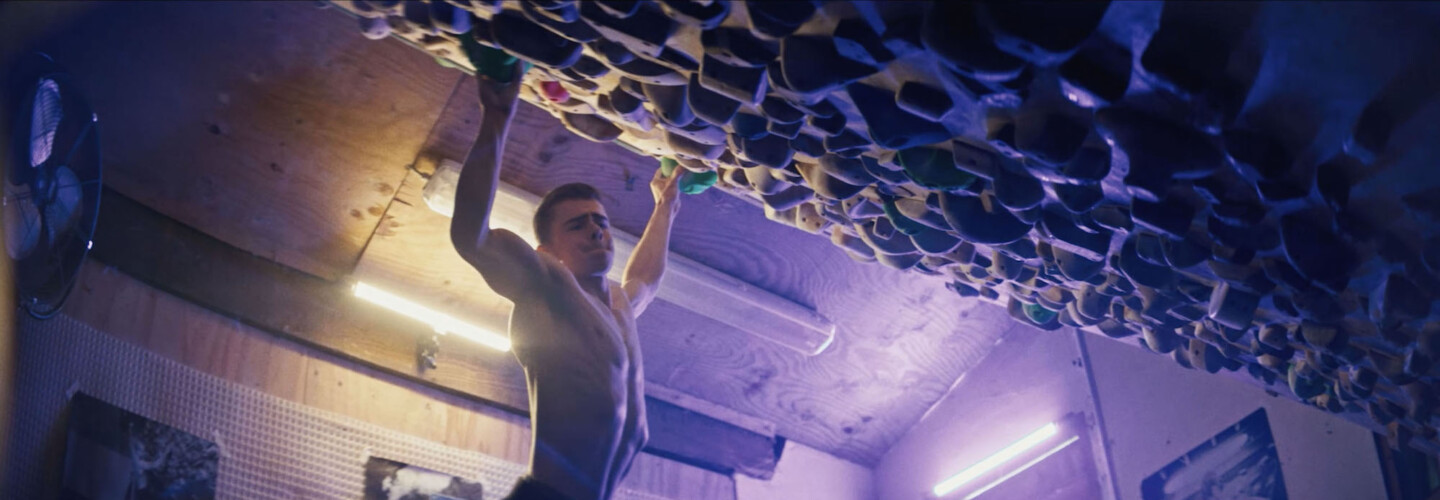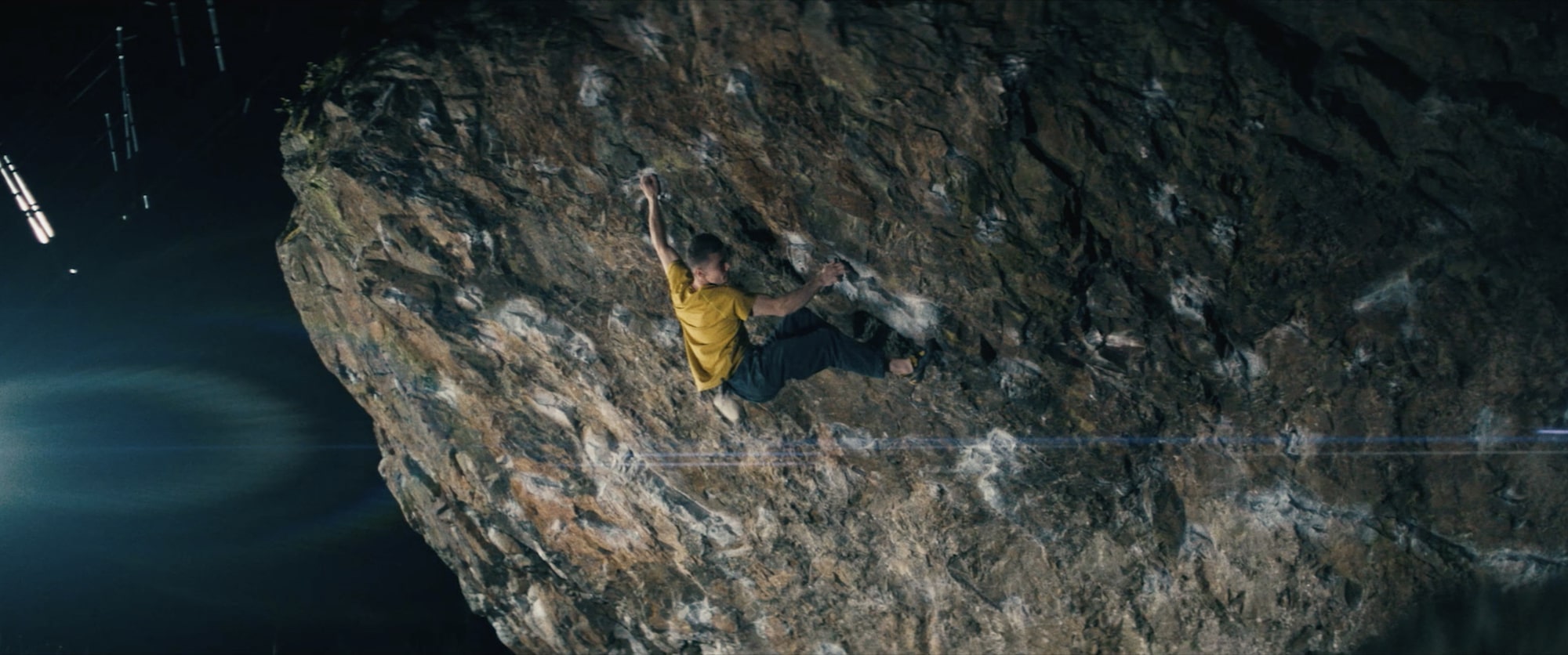
Brash, propulsive and dynamic, using a widescreen format, a great sense of rhythm, and a mixture of montage and slow-motion sequences, and all scored by 90s-style rave tracks, Midair is the ultimate tribute to the power of bouldering. It’s a form of climbing where the focus is not so much on getting to the top, but learning not to fall; even though even the best climbers always fall, again and again, and again. The result of this short but sweet evocation of the highs and lows of bouldering is a thrilling look at a sport that I have never tried before but now have half a mind to take up. An avid climber himself, DN had the chance to talk to Director Louis-Jack about getting involved with the bouldering community, capturing the feeling he has while climbing and making sure he picked the right music to allow the film to truly take off.
Was Midair your first introduction to bouldering or did you have a connection to the sport before this film?
I’ve been climbing for about ten years now. My main sport really is skiing and I was doing some kind of ski mountaineering-type stuff and the people I was doing it with were like: “You should try climbing, you would really like it.” I didn’t take much notice of it. Then I had my first experience climbing a wall in London and just got hooked from day one. Ten years later, I’ve been on quite a journey with the sport. I just absolutely love it. It doesn’t really feel like a sport. It becomes a whole kind of lifestyle.
Most of the team that made the film are also climbers; there’s a big crossover between climbers and people in the creative industry.
With bouldering, there’s no rope, so there seems to be this expectation that you will fall. I find that quite interesting…
The thing with bouldering is that there’s a ‘lot’ of falling. There’s also just a lot of waiting and hanging around. Every boulderer wants to climb in such a way that they are at the very limit of what they’re capable of. The feeling is very similar no matter whether you’re a beginner or an expert. So there’s lots of room to make mistakes and not get it quite perfect. There’s very little margin of error. Every time you do make an error, you fall off the rock. People often battle the same routes over multiple sessions, sometimes over years. They fall and fall and fall until at some point they hopefully succeed.
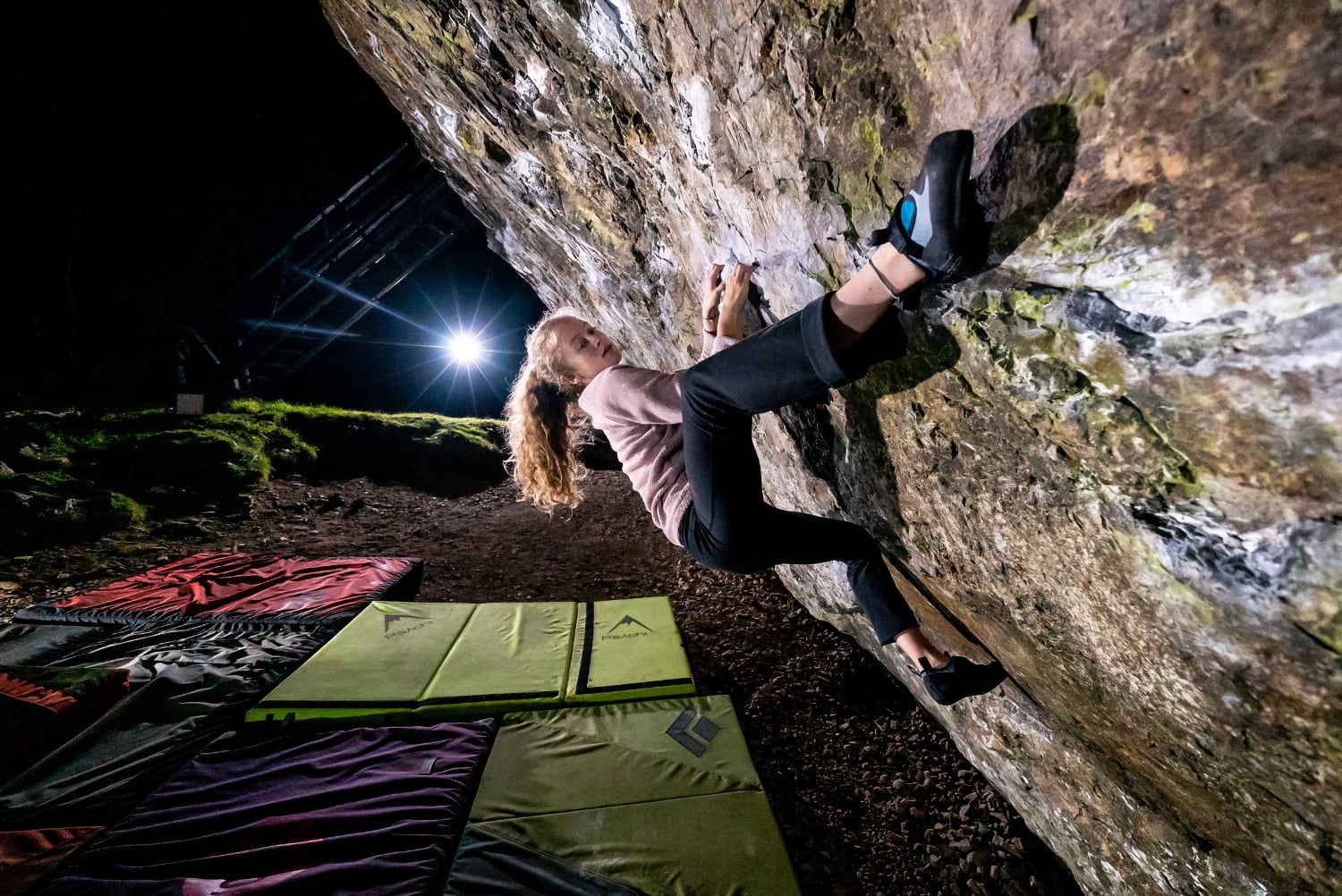

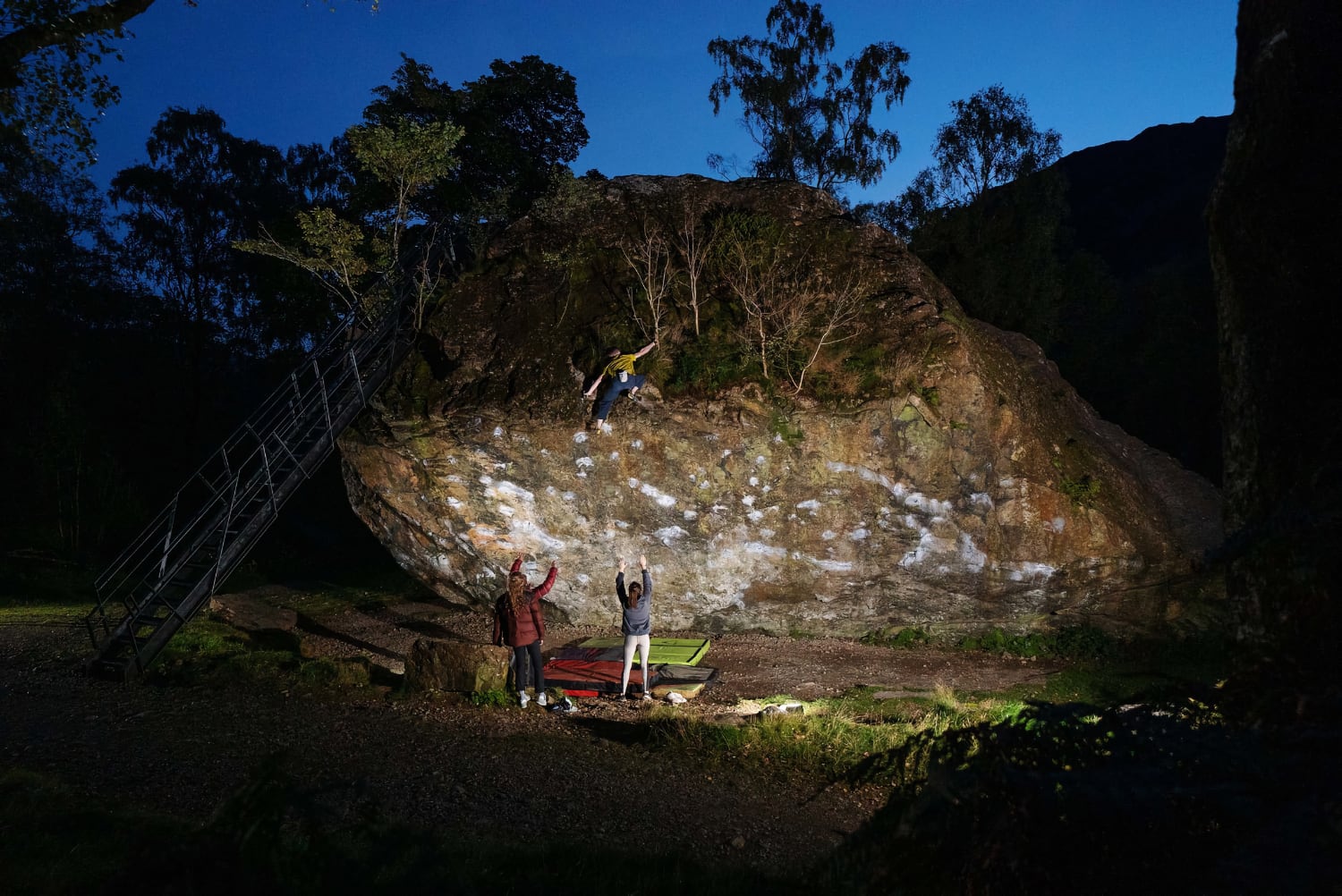
Did you know the people in your documentary personally or did you have to look around the wider community?
The nice thing about this community is that it’s relatively small and super friendly. You can go to a club and rub shoulders with the best climbers in the sport. We had in mind these four climbers that we wanted to work with. It was pretty easy to find them. We had some personal connection to a couple of them and then the others came on board as a result. Most of the team that made the film are also climbers; there’s a big crossover between climbers and people in the creative industry. So it was pretty easy.
I wasn’t interested in making a typical climbing film at all – I wanted to really convey the experience of climbing itself.
How did you want to approach the project? From my experience watching these types of films, there’s a heavy reliance on GoPros but you use drone shoots and a widescreen frame…
Maybe it’s just in my nature to want to go against the grain. The typical thing when you see climbing films is relatively lo-fi cameras, and filming the climber in one shot as a wide, so it becomes documentary evidence of the ascent. But in this film I wasn’t interested in making a typical climbing film at all – I wanted to really convey the experience of climbing itself. I found it would be more effective to shoot in a more cinematic way to bring us into the action with the climbers and to use these anamorphic lenses which are very characterful as a way to convey a more subjective, personal view of climbing. Making the whole format 2:39 is also the opposite of what you’d expect because you might expect a more vertical aspect ratio like 4:3. But I thought that this film was more about the journey of climbing than the ascent itself. I’m more interested in what happens in the middle.


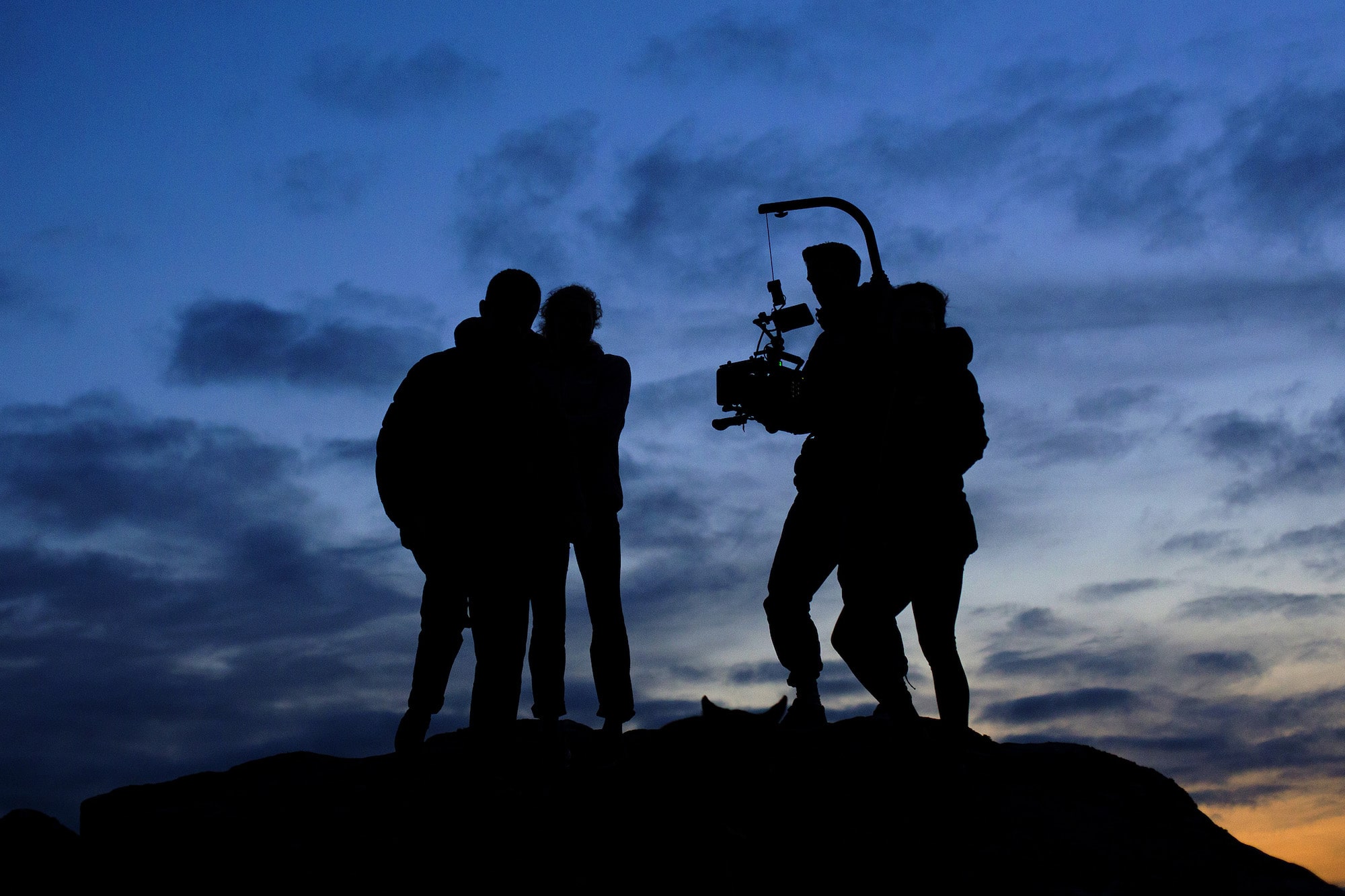
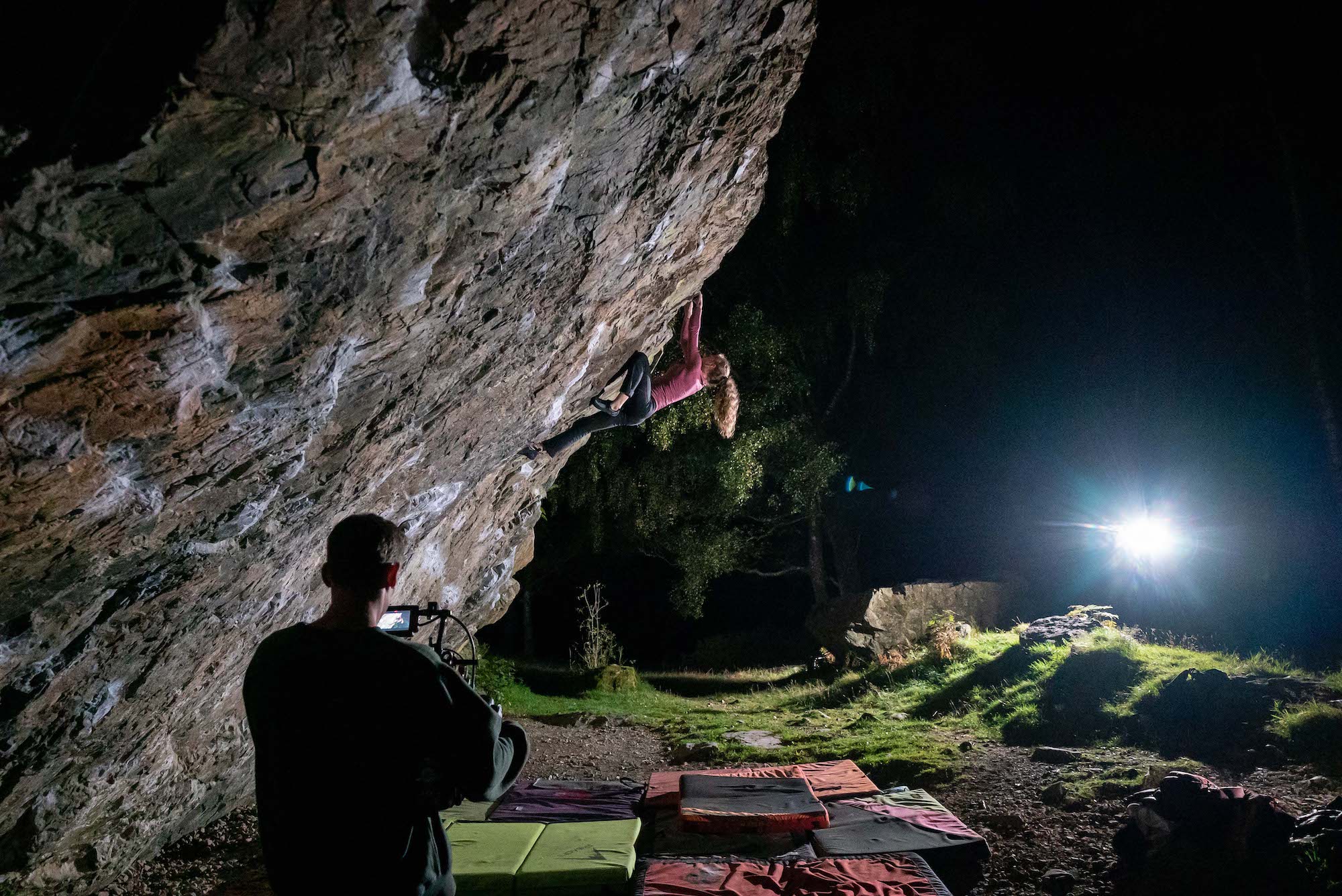
And you have these great shots of people flying through the air, showing them in the middle of their descent. How did you achieve those?
We went to a circus school in London. We had some different ideas about how to achieve it. In a big budget film, you’d do it with special rigs with harnesses and wires, and then get someone completely floating in space and control it. Then you’d have a lot of work to do in post to remove it all. But we didn’t have the budget for that, so we ended up shooting it all on a big trampoline with a high speed camera. I think the results end up better because they are genuine falls.
This film is more about the journey of climbing than the ascent itself.
I loved the rave music — it reminded me of Future Sounds of London, actually. It really propels the film. Did you always have this from the beginning?
The music was so integral but probably one of the hardest parts of the process to get right. We went through so many different tracks! Right from the beginning I knew that I wanted to combine climbing with electronic dance. It’s just the kind of music that I loved. I knew that the main climber, Jim Pope, is also really into this music. It also harks back to The Real Thing, one of the best climbing films ever made, in the 90s, that uses an amazing rave soundtrack. It’s a little bit of homage to that, and going back to the early roots of climbing. There’s also this epic quality to this music, which captures the moments in climbing when you have succeeded in your personal quest and have those fleeting moments of euphoria like you might have on a dance floor.
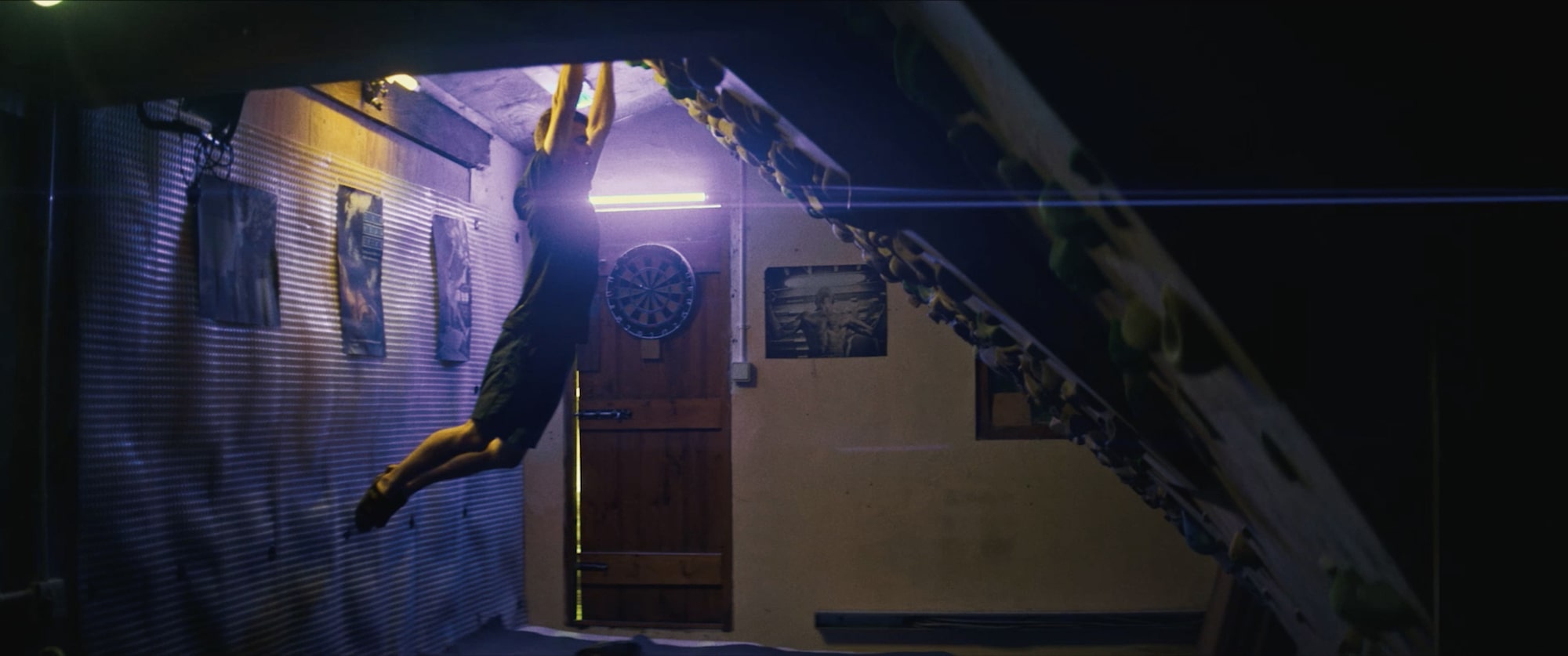
What are you working on next?
I’m working on a short film which definitely has some links. It’s basically a short film set in a nightclub, but based on a medieval morality tale. An illuminated manuscript which maps or describes a man’s journey through hell and heaven, led by an angel. They see these amazing hallucinations of the different punishments of hell and the levels of heaven. But mapping that in a less dogmatic way onto a nightclub space. It’s a non-dialogue short film. I guess what unites it with Midair is that it has those fleeting moments where we move outside our own bodies or heads, and experience ecstasy or euphoria or hyperbolic enlightenment. But very, very fleeting.

